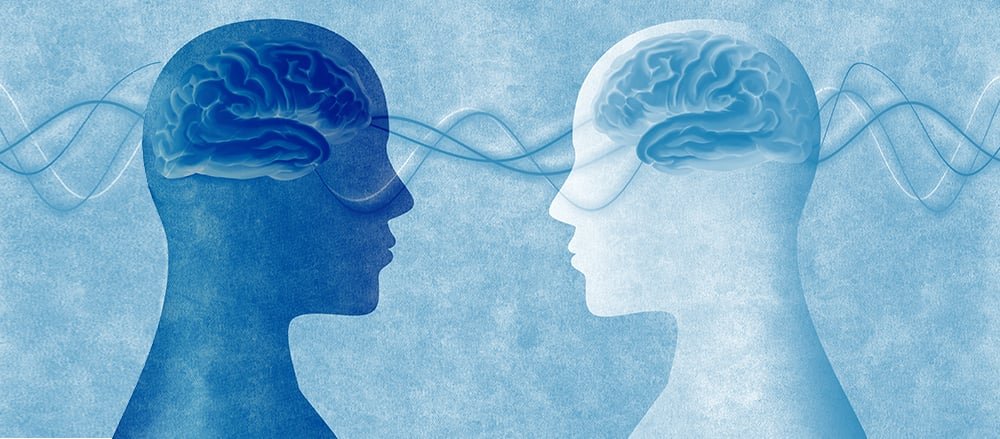The neuroscience of psychodynamic psychotherapy
We live in exciting times for psychiatry.
Over the last decade, there’s been increasing interest in integrating neuroscience and psychotherapy. Indeed, the two fields take complementary approaches to understanding the human condition: neuroscience examines brain structure and function while psychotherapy explores complex human behaviour and experience.
Advances in neuroscience have led to a deeper understanding of the link between neuroscience and psychotherapies, and has informed the development of a number of new therapies.
But scholars working in the main form of therapy that I use (psychodynamic psychotherapy) haven’t exploited these advances in the same way.
This doesn’t mean that psychodynamic theory does not have a neurobiological basis. Instead, it raises the important question of whether psychodynamic theory can utilise neuroscience to expand the art of psychodynamic psychotherapy.
Freudian roots
It’s important to consider the historical and philosophical roots of both neuroscience and psychodynamic theory. The latter part of the 19th century saw rapid advances in the neurological and neurophysiological understandings of the brain as well as the beginnings of systematic and scientific psychological endeavours, such as the emergence of psychiatry and the developing psychological theories of thinkers like Freud and Janet.
Freud attempted to straddle the two fields with his “Project for a Scientific Psychology.” He hypothesised about representing memory via a system of barriers that anticipated Sherrington’s work on synapses, and he also developed concepts of large brain functional network that presaged Lurija’s concepts.
While the 20th century saw significant advances in neuroscience that could finally test Freud’s hypotheses, neuroscience progress had stagnated in the mid-1890s and interest in psychological processes was increasing in sophistication. This led to the establishment of psychodynamic theory, which has been evolving since.
The success of Freud’s legacy is reflected in how commonplace words such as “the unconscious”, “the Oedepal complex” (among other complexes), and “anal retention.” He revolutionised how we think about mental health.
Nevertheless, a divergence emerged between psychotherapy and neuroscience that persisted for almost a century. Crucial to this divergence was Freud’s abandonment of his “Project for a Scientific Psychology” in 1895, which saw him deliberately turn away from neuroscience after he failed to adequately describe his psychological theories in neuroscientific terms.
While Freud didn’t reject neuroscience, it was not sufficiently advanced at the time to meet his needs. Indeed, he viewed this parting of the ways as temporary and he always anticipated that one day his theories would be translated into a neuroscientific language.
Neurogenesis and Brain Development
Norman Doidge’s book “The Brain that Changes Itself” is a journey of discovery that the mechanistic scientific model of the brain that existed prior to the 1990s is wrong. Neurogenesis and neuroplasticity occur throughout life.
A number of factors have been shown to at least influence neurogenesis. These include lived experience, hormones (such as cortisol and oxytocin), and gene-environment interactions.
An important implication is when thinking about how pathology can result from childhood adversity, which is a central concept in psychodynamic psychotherapy. The idea of our fate being sealed by childhood adversity contradicts current scientific knowledge. There is hope. Though it is difficult to reverse the damage of childhood adversity, recovery is possible and depends on the type of therapeutic experience.
Affective Neuroscience
Scientific interest in emotions has been a relatively recent development. Panksepp’s work draws on the fact that we share with animals the same anatomical structures that are important for consciousness.
He describes an “evolutionary trajectory” ascending from the brainstem, through the midbrain and subcortical structures, to the cerebral cortex. Each system has corresponding and characteristic autonomic and physiological reactions (such as facial expressions, blushing, etc).
Activation of these systems has the potential to “drive” a person towards adaptive or maladaptive behaviour. For instance, the fight/flight response stems from the “emotional brain” in the limbic system, whereas the freeze/dissociate response arises from the “reptilian brain” in the brainstem. See my blog on psychological trauma.
These systems can be modified and/or regulated by higher centres in the brain. However they cannot be abolished - one of the goals of psychodynamic psychotherapy is to integrate them into a whole. As Jung wisely said: “no tree… can grow to heaven unless its roots reach down to hell.”
A reprise
And so with drives (Freud’s “libido”), we finally return to Freud’s “Project for a Scientific Psychology.” With the increased social awareness of mental health along with the emergence of sophisticated new directions in neuroscience, including the psychedelic explosion, psychiatry is glimpsing a bright future.
I cannot possibly do these enormous bodies of research justice in a simple blog post. I and a mentor have toyed with the idea of writing this as a paper - indeed I thank Dr Michael Moore for a number of the ideas here.
